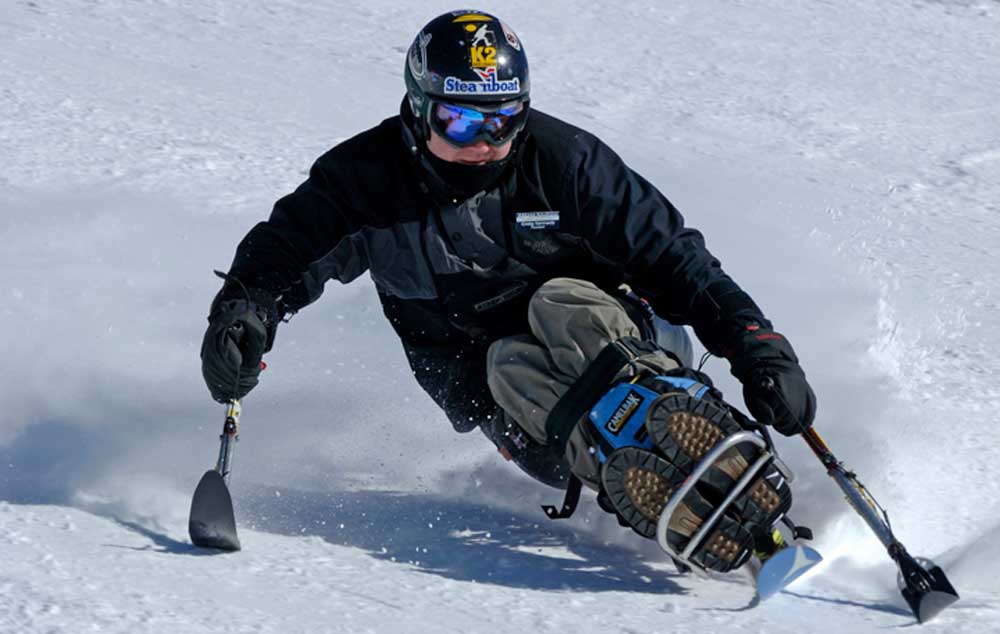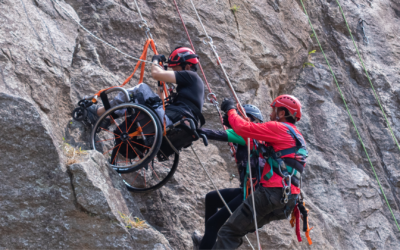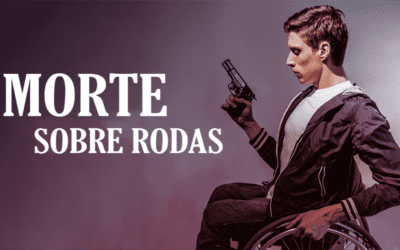
Disability skiing: The rise of accessible ski resorts
As the 2012 Paralympics showed so emphatically, there are few limits to what the human body can achieve in sport. The same is true of winter sports, where accessibility and facilities for disabled people have been increasing steadily over the years. Ski resorts are coming to realise that a family or group of friends should be able to enjoy a holiday together in the mountains, even when an individual has a disability or a life-challenging illness.
Britain’s favourite ski destination, France, leads Europe in the number of ski schools trained in handiski, the general term used in France for specialist equipment for disabled skiers. There are 150 ski schools throughout France, mainly within the Ecole du Ski Français (ESF), that offer handiski instruction and hire. The equipment could be anything from a piloted tandem ski to mono or dual sitskis that come with outrigger-type poles. There’s even the new vertiski, unique to La Plagne, where paraplegics can stand while skiing. Sponsors subsidise the high cost of the equipment, which is free to skiers if booked with a lesson.
It can, however, be a complicated business to match the resort with the facilities that are needed for the broad spectrum of disabilities. Catherine Cosby runs the non-profit foundation Ski 2 Freedom, which advises individuals or families with disabilities, tour operators and tourist boards how to get the most out of a mountain holiday.
“Any French resort that has the adapté label will have to have a certain level of disabled skiing,” she says. “Savoie Mont Blanc alone has 32 stations with the label. If you’re in a wheelchair, you’ll probably want somewhere quite flat with clear streets, like Valloire. If you have sight problems, Méribel is very good, as is Gstaad in Switzerland, which has a hotel, the Solsana, dedicated to blind people.
“At Aime-La Plagne, the accommodation, shops and restaurants are all in one building: it’s like a cruise liner. Sestriere in Italy hosted the 2006 Paralympics so there are lots of adapted hotels and instruction. Les Gets has lots going on for disabled kids, including torchlight descents in sitskis.”
The British obsession with ski-in-ski-out accommodation doesn’t always work for people with limited mobility, warns Cosby. “Very often there’s an incline or steep driveway up to the chalet, or getting to the ski slope can be awkward. Unless it’s five-star luxury where there’s a minibus available the whole time to take you around, how are you going to get anywhere?” However, new resorts such as Les Arcs 1950 have been built with such access in mind, as the chairlift goes right into the centre of the traffic-free village and the accommodation has to have a certain percentage that has been adapted for disabled users.
“There’s a huge disparity between resorts,” says Frank Gardner, president of the Ski Club of Great Britain and BBC security correspondent.
Gardner has needed a wheelchair since being shot six times while on assignment in 2004, which left him with a spinal cord injury. “Some like La Plagne and ones in Colorado are really adaptive ski friendly, where skiers in sitskis are a common sight. There are others, which unfortunately are the ones I’ve been going to in Germany and Austria, where I can do it only if I hire a guide to ski with me the whole day, which is pretty expensive.
“The actual skiing itself is easy. It’s the getting on and off the lifts and the logistics: where do I leave my wheelchair? Where do I transfer from my wheelchair to the sitski? And what do you do about lunch? One thing I tend to find in the Alps, for some weird reason, is that all the loos have to be downstairs in a cellar. It’s impossible for me.”
Inaccessible loos aside, there has been a change in attitude to disabled skiers. Simon Atkinson is the director of the ESF ski school in La Rosière, and has noticed major improvements. “Ten to 15 years ago, people said we have to do things for disabled people but it’s going to cost us money. Now it’s no longer the thought,” he says. “What they’ve cottoned on to is that there are lots of different disabilities. People with limited mobility can include elderly people, someone with an illness, not necessarily someone in a wheelchair. All these modifications are helping other people as well.”
For disabled skiers and snowboarders who want a taste of the sport before committing to a full holiday, Disability Snowsport UK runs adaptive ski programmes in seven snow domes in England and Scotland. If the ski bug bites, the thrill of being in the mountains awaits.
Source: ENAT
Compartilhe
Use os ícones flutuantes na borda lateral esquerda desta página
Siga-nos!
Envolva-se em nosso conteúdo, seus comentários são bem-vindos!
Artigos relacionados
Teleton AACD. A pessoa com deficiência como protagonista.
Teleton AACD. A pessoa com deficiência como protagonista. Uma iniciativa internacional abraçada pelo SBT no Brasil.
Acessibilidade no ESG. Equipotel aborda o tema para o turismo.
Acessibilidade no ESG, para o mercado do turismo. Equipotel aborda a importância da inclusão da pessoa com deficiência.
Morte Sobre Rodas. Filme inclusivo foi candidato ao Oscar.
Morte Sobre Rodas. Dois protagonistas do filme, são pessoas com deficiência, um usuário de cadeira de rodas e outro com paralisia cerebral.






0 comentários